Part-II: Cat Breed Information
Cat Breeds Info
Abyssinian
This muscular cat has a soft coat, pointed ears, and a long
tail. It comes in various colors like red, fawn, cream, lilac, or ruddy in America while it could be sorrel or fawn in the UK.
This breed is very energetic.
American Bobtail
This cat could be long-haired or short-haired. These cats have
a broad head with medium-sized ears, a wide nose, and a
clear muzzle. Legs are proportionate to body length and the
length of its tail is half the body length.
American Curl
This medium-sized cat has a soft and silky coat. It has walnut-
shaped large eyes with wide and back-curving large ears. Its
nose is straight and has a rounded muzzle with a firm chin.
American Shorthair
This cat is normally has specific patterns and colors like
brown, silver, cream cameo, or red. It has a dense short coat.
Copyright © 2007paul Brough ~ All Rights Reserved
Page 14 of 102
“Understanding, Caring for and Training Your Cat” by Paul Brough Page 15 of
102
This cat is affectionate and gets on well with children, cats and other animals.
American Wirehair
This breed is popular in the USA, although found all over the
world. This breed came into existence through selective
breeding of a male kitten from nonpedigreed parents. It has a
curly coat in different colors. This breed has crimped hair.
Balinese
This medium-sized cat has a fine and silky coat. A tapering
head starts from the nose and forms a triangle at the ears. It
has long and slender legs. Its feather-like tail tapers at the
end.
Bengal
This is a special breed developed through a domestic cat and
an Asian Leopard cat. It is a well-tempered exotic breed with
high-energy levels. They are excellent companions and require
lot of affection and attention.
Birman
This breed exhibits controlled behavior. Although it is a long-
haired cat, it does not require extensive grooming. This breed
takes part in all action around it and loves playing with toys
and children.
Copyright © 2007paul Brough ~ All Rights Reserved
Page 15 of 102
“Understanding, Caring for and Training Your Cat” by Paul Brough Page 16 of
102
Bombay
These medium-sized muscular cats have fine and shiny coats.
Eyes are large and ears tilt forward with rounded tips. It has a round face, short snub nose, firm chin, and round muzzle.
British Shorthair
This breed is present in a multitude of colors, patterns, and
combinations. Tabby cats could be lilac-silver, chocolate
tortoiseshell silver, and others. Solid cats are normally black, white, red, blue, and other colors.
Burmese
This breed has a short and glossy coat with large and round
eyes. It has a round head with a firm rounded chin and short
muzzle. The body is medium sized and the legs are
proportionate to its body size. It has a straight tail.
Chartreux
This breed has a soft, short, and dense coat with a woolly
texture. It is an affectionate and smart breed. It loves the
telephone and television. These cats mature at the age of
three.
Cornish Rex
This breed has an egg-shaped head with high cheekbones and
a round muzzle. Eyes are oval-shaped and the ears are large.
This breed has a short and wavy coat.
Copyright © 2007paul Brough ~ All Rights Reserved
Page 16 of 102
“Understanding, Caring for and Training Your Cat” by Paul Brough Page 17 of
102
Devon Rex
This breed was discovered in the sixties. It has a small head
with large ears. It has a crinkly coat and an impish face. It is easy to train this breed to perform simple tricks. It prefers
being in warm places in the house.
Egyptian Mau
This elegant breed has an attractive coat that is silky, dense,
and glossy. It normally has light green almond-shaped eyes.
This breed is extrovert and smart. It can learn and perform
small tricks.
European Burmese
This breed has a short, satin, and thick coat without any
undercoat. It has a round head with high cheekbones. It has
slender legs. This breed is heavy, although it may not appear
so.
Exotic Shorthair
These playful cats have a soft and dense coat with a thick
undercoat. Eyes are large and bright and ears have a slight tip
towards the front. Legs are short and strong and have a short
curvy tail.
Havana Brown
This breed is predominantly in brown color. It is more reddish
brown than blackish brown. Although whiskers are brown,
they turn white with age.
Copyright © 2007paul Brough ~ All Rights Reserved
Page 17 of 102
“Understanding, Caring for and Training Your Cat” by Paul Brough Page 18 of
102
Himalayan
This breed developed through breeding of traditional Persian
cats with Siamese cats. They have chubby faces with long and
flowing coats. They like a quiet and calm atmosphere.
Japanese Bobtail
This breed has a medium-sized coat with large and oval eyes.
It has a long head with a long nose and high cheekbones. It
has a unique tail and large and wide eyes.
Javanese
This breed comes in different color combinations and patterns.
Although they look delicate, they are extremely strong and
muscular. This breed is smart and can identify playtimes and
mealtimes clearly.
Korat
This breed of medium sized cats has smaller females than
males. It has a single thick coat with short to medium length.
Eyes are large and round with ears set high.
Maine Coon
This breed is the original American cat. These cats normally
measure five feet from nose to tail. Brown tabby with
mackerel or classic markings is the common color of this
breed.
Copyright © 2007paul Brough ~ All Rights Reserved
Page 18 of 102
“Understanding, Caring for and Training Your Cat” by Paul Brough Page 19 of
102
Manx
Most cats of this breed do not have a tail, although there are a few with tails. These cats have a round and stout appearance
with long hind legs and short backs.
Munchkin
This new breed is through random mutation of a cat with small
legs. It has a long or a short coat in a multitude of colors. This breed is active and is normally a fast runner.
Nebelung
This breed has a lustrous coat with round green eyes on a
triangular head. It has erect ears and a fluffy tail. These
intelligent cats are affectionate and yet shy.
Norwegian Forest Cat
This is a strong breed and has a silky coat. This breed is
normally of many different colors. This breed matures late,
normally around four years old. These cats are friendly pets.
Ocicat
This breed has a smooth and thick coat with large and pointed
ears and almond-shaped eyes. These cats have medium-sized
muscular legs and a slim and tapered tail.
Copyright © 2007paul Brough ~ All Rights Reserved
Page 19 of 102
“Understanding, Caring for and Training Your Cat” by Paul Brough Page 20 of
102
Oriental
These medium-sized cats could have long or short hair with a
downy undercoat. Normally, this breed is fleckless green, blue,
or an orange color. It has a long slim neck with a fine muzzle.
Persian
This is one of the oldest breeds. It sports a thick coat and has a wide head with far-set ears and large eyes. These cats
require regular grooming to maintain fur in good condition.
Pixie-Bob
This breed is normally over-sized with heavy bones. It has a
naturally bobbed tail of around two to six inches. These are
quiet cats but are affectionate and get along excellently with
dogs and other pets at home.
Ragamuffin
These large cats are seen in many patterns, colors, and
combinations. They mature at around four years of age and
have a long life. These are very adaptable cats.
Ragdoll
These cats are of many color combinations and patterns like
blue-cream, seal-tortoiseshell lynx, lilac cream lynx, and
others. These cats could have a link to Burmese and Birman
cats.
Copyright © 2007paul Brough ~ All Rights Reserved
Page 20 of 102
“Understanding, Caring for and Training Your Cat” by Paul Brough Page 21 of
102
Russian Blue
These cats have silvery-blue coats. They are believed to
belong to royal families of Russia. These intelligent cats are
very affectionate towards children and elders alike.
Savannah
This exotic breed is a cross between a domestic cat and an
African Serval. These are tall, slim, and large breeds. They
sport dark coats with spots of a lighter shade like a silver coat with dark spots, or a tan coat with black or brownish spots.
Scottish Fold
This breed is in many colors. It is normally in folded ear or
straight ear type. The special characteristic of this breed is the fold of its ear. This is due to a spontaneous mutation of an
incomplete dominant gene.
Siamese
This is a very popular breed. Original Siamese cats had a dark
brown contrasted body with lighter shades. Four more shades
developed from this later. These are aggressive and assertive
cats.
Siberian
This long-haired breed are hypo-allergenic due to their lack of
a specific protein. These are playful, affectionate, and gentle
cats. They make excellent companions.
Copyright © 2007paul Brough ~ All Rights Reserved
Page 21 of 102
“Understanding, Caring for and Training Your Cat” by Paul Brough Page 22 of
102
Singapura
This breed is originally from Singapore. It has a muscular build with strong and slender legs. Its slender tail has a blunt tip.
Body color is gold or golden ivory with light bands. It has a
round head and a gentle muzzle.
Snowshoe
This is a small, lean cat breed with large, triangular eyes. Coat is short-haired and tail is medium-sized. They require more
attention than other cats and therefore, cannot stay alone for
long periods.
Sokoke
This is the rarest breed among cats. This moderate-sized cat
has long legs and a short and dense coat. The coat is elastic
and short. Tail is long and thin.
Somali
This breed has a great similarity to a fox. These cats have
numerous color combinations. These cats mature late, around
eighteen months of age. They are otherwise energetic and
playful cats.
Sphynx
This is a medium-sized, short-haired cat. They have large eyes
with high cheekbones. They normally do not have any
whiskers. They have a soft and warm coat with small areas of
fur on the tip of the tail or around their toes.
Copyright © 2007paul Brough ~ All Rights Reserved
Page 22 of 102
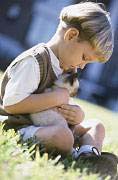
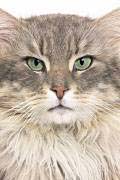
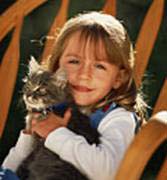
“Understanding, Caring for and Training Your Cat” by Paul Brough Page 23 of
102
Tonkinese
These are short-haired, medium-sized cats. These muscular
cats have large ears over a wedge-shaped head. These cats
are playful and lively.
Turkish Angora
This breed is long and elegant. They have silky and medium
length coats. These cats are normally white in color. They are
intelligent cats and love their owners unconditionally.
Turkish Van
This breed has a seasonal coat with soft and long silky
feathers. They have large oval eyes with high cheekbones, a
round chin, and rounded muzzle. Tail is of medium length.
Copyright © 2007paul Brough ~ All Rights Reserved
Page 23 of 102
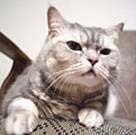

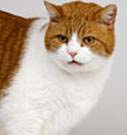
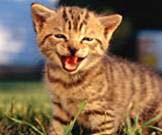
“Understanding, Caring for and Training Your Cat” by Paul Brough Page 24 of
102
Common Cat Colors
Cat colors and combinations could be -
Tabby
Tabbies are cats with stripes. This comes across as the original color of domesticated cat. Tabby patterns could be classic
tabby, mackerel tabby, tickled tabby or spotted tabby. Classic
tabby is the same as blotched tabby. It has bold patterns on
the sides. Mackerel tabby has parallel narrow stripes on the
sides, similar to a tiger. Tickled tabby does not have spots or
stripes. It has tabby markings on the face and hair. A spotted
tabby has large and small spots all over.
A blue tabby could have gray stripes on dark or light blue-
gray. A brown tabby could have black stripes on gray or a
brown color. A cream tabby has cream stripes on a pale cream
color while a red tabby has orange stripes on a cream color.
Solids and Smokes
Solid color refers to almost the same color all over your cat’s
body. Such solid colors are due to recessive gene that
suppresses tabby patterns. Solid blue is dark blue-gray all
Copyright © 2007paul Brough ~ All Rights Reserved
Page 24 of 102
“Understanding, Caring for and Training Your Cat” by Paul Brough Page 25 of
102
over while solid black could be coal black or brownish black all over.
Cats with white markings
Such cats could have smaller or larger white areas. Cats with
a few white belly spots has buttons while a cat with a white
spot on the chest has a locket. Cats with white paws is mitted
while Van is an almost white color with a few patches on the
tail and head. Bi-color is half-white while harlequin is white
with large color patches. Tuxedo is a black and white
combination with white color on the paws, chest, and belly.
Tortoiseshell, Patched Tabbies, and Calicoes
A random patch of different colors is a calico, tortie, or
patched tabby. Tortoiseshell and white has a few white areas.
Calico has more white with large black or red tabby patches. A
patched tabby could have a lot of white with patterned color
patches.
Pointed (Siamese) Pattern
If your cat has a dark face, tail, and paws with lighter shading on the body it is a pointed cat. Although this is a characteristic of Siamese cats, other purebreds also share this color
combination.
Copyright © 2007paul Brough ~ All Rights Reserved
Page 25 of 102
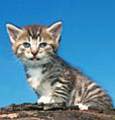
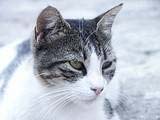

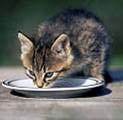
“Understanding, Caring for and Training Your Cat” by Paul Brough Page 26 of
102
Before You Buy a Cat
Before buying and bringing home a cat, you should consider
various factors involving the cat, your house, family members
and other possible factors. If you do not consider such factors, you may have to return your pet soon after you purchase and
bring it home. This can cause lot of misery and sorrow all
around.
Your Situation
Consider your personal situation before purchasing a cat. You
should have sufficient time to care for the cat. If you have a
full-time job, you should be able to take sudden leave to
attend to any emergencies. Cats require company. It is not
sufficient to give shelter to a cat in your house. You have to
give it time just as you care for a child.
If you live in rented accommodation, find out if cats are
permitted within those premises. You should have sufficient
space for rearing a cat and provide scratching posts, litter
boxes, sleeping places for the cat and much more. Consider
whether all your family members are ready to accept a cat
within the house.
Copyright © 2007paul Brough ~ All Rights Reserved
Page 26 of 102
“Understanding, Caring for and Training Your Cat” by Paul Brough Page 27 of
102
Another important factor is caring for a cat. You should
consider small children within the house; if they can live with
a cat. They should understand how to treat the new cat as a
living being and not as a toy.
Additionally, you should get a cat allergy test done for all
family members. If any of your family members have cat
allergies, it is best not to buy a cat.
You will require feeding bowls, towels, transport carriers or
special boxes to transport cats to different places. You may
have to transport your cat to a friend’s place or for a visit to the veterinarian.
Financial
Cats do have several recurring expenditures. You should
consider your financial situation; whether you can afford the
cat’s medical, food, and other associated expenses.
There are various routine expenses like vaccinations and costs
of other accessories. You should be able to support a cat’s
expenses wherever you move.
Cats normally live for fifteen to eighteen years. You should be
able to support all its expenses over its life.
The Breeder
You should look into the health standards of the place where
you are purchasing your cat. It should be a licensed and
Copyright © 2007paul Brough ~ All Rights Reserved
Page 27 of 102
“Understanding, Caring for and Training Your Cat” by Paul Brough Page 28 of
102
registered establishment. It is best to purchase from
recommended sources.
You could ask for dependable recommendations from your
friends and relatives that have cats as pets. Get your
veterinarian to perform a thorough examination of the kitten
you purchase and follow up any problems with the breeder as
soon as possible.
The Cat Itself
Refrain from making an impulsive purchase. Do not buy a cat
that looks pathetic or sick. It could cause serious health
problems for your young ones at home. Do not take home a
cat that requires extensive nursing. Your family members
would be aghast if you have to give back the pet after some
time. Check for adequate worming and recent vaccinations of
your kitten.
Adult cats should have proper house training. Do not buy
aggressive cats, as these usually cannot make good household
pets.
Cats are lovable and affectionate pets. They soon become an
important member of your family. Therefore, before
purchasing a cat, consider all possible aspects before you
welcome your new member. This can save you many
heartbreaks and disappointments later.
If you are in doubt over any particular fact, it is best not to
buy and bring home that cat or kitten.
Copyright © 2007paul Brough ~ All Rights Reserved
Page 28 of 102
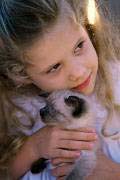
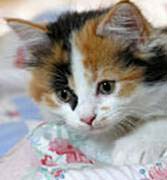
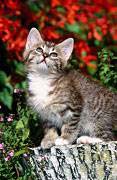
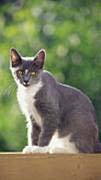
“Understanding, Caring for and Training Your Cat” by Paul Brough Page 29 of
102
Selecting a Cat that is Right for You
Many often choose to buy a cat of a specific breed as it
assures specific personality traits. However, this is not always true.
Traits are common to breeds and not to all cats or kittens
within the breed. Breed alone cannot decide the type of cat a
kitten grows into. It depends more on its parentage and the
social order it has been in since its birth.
While selecting a cat that is right for you and your family,
consider these factors:
Kitten or Adult
Kittens are truly irresistibly cute. It would be difficult choosing a cat over a kitten. Nevertheless, you should look into the
practical aspects of choosing a kitten. They require a lot of
attention and care in their growing years. You need to train
them in all aspects like litter training, feeding and mingling
with other pets in the house. Adult cats are normally trained
and can soon settle in new premises and surroundings.
Copyright © 2007paul Brough ~ All


















